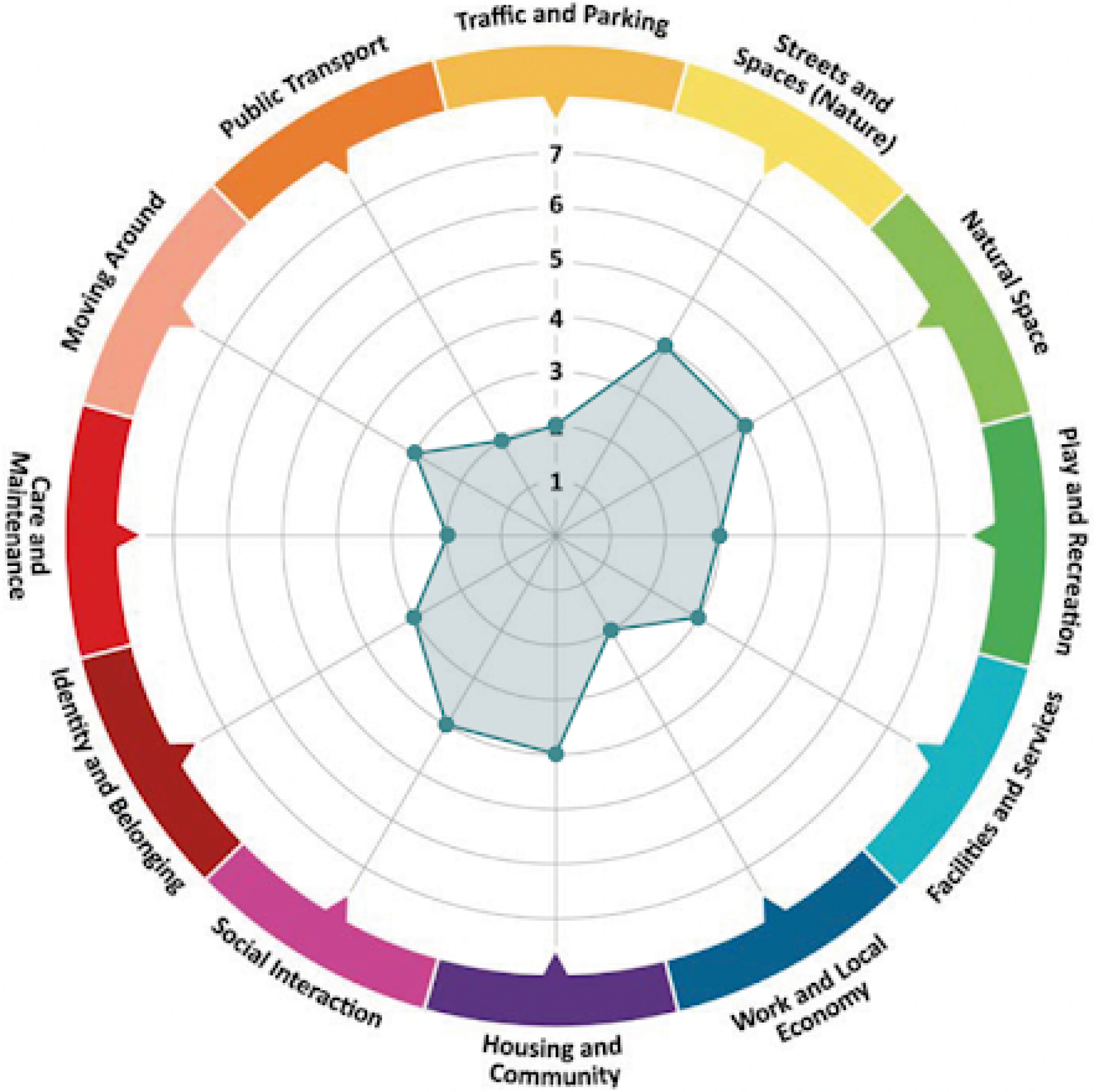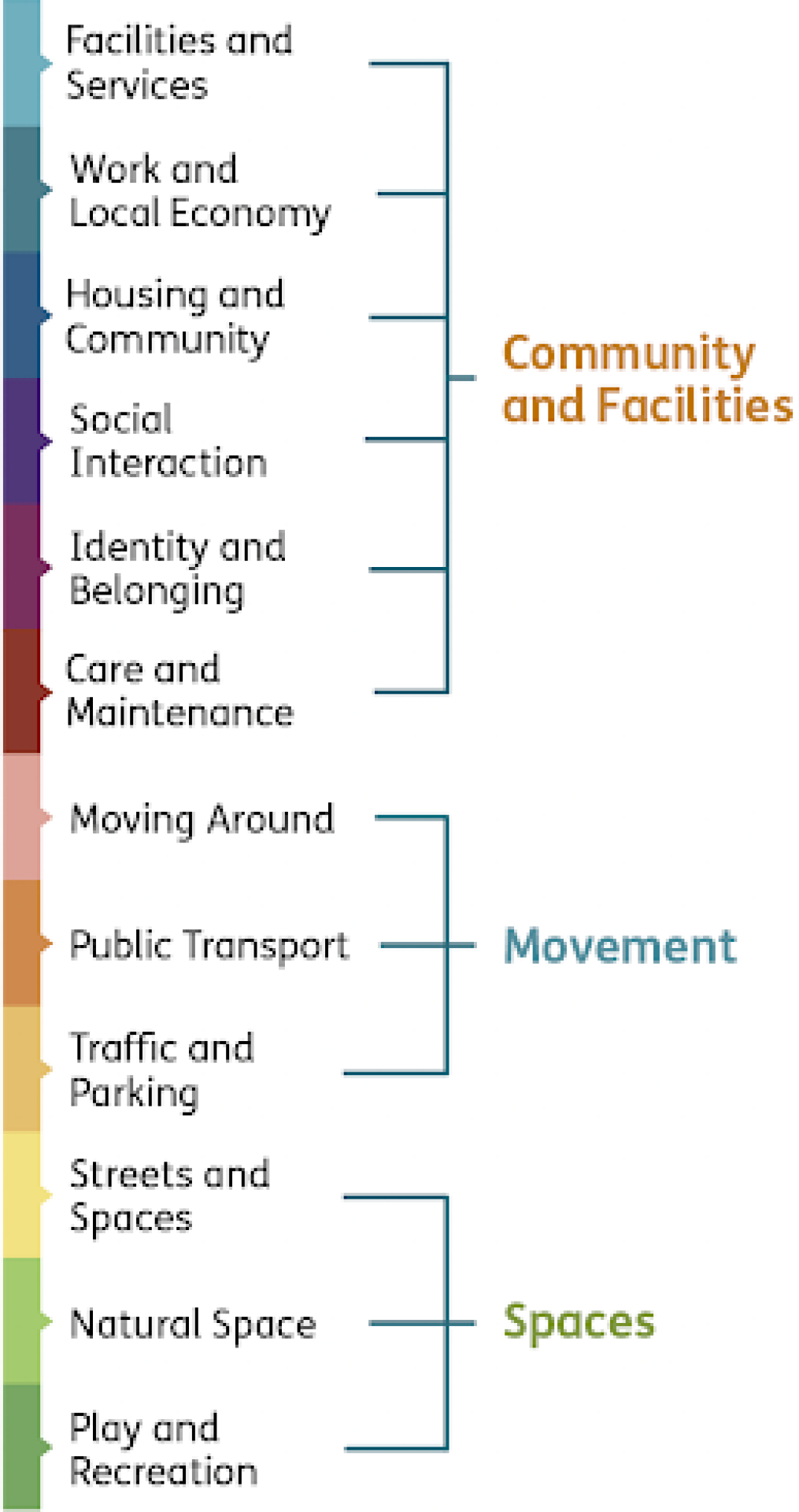Summary of the initial engagement
In summer 2023, the initial stage of community engagement introduced the site to stakeholders and the local community, and to gain an insight first hand from local people into the issues and opportunities impacting Clacton-on-Sea and the surrounding area.
In the initial engagement, people were asked to assess Clacton-on-Sea and Hartley Gardens using 12 key themes, and rating them 1 to 7 (1 being a bad score, 7 being a good score). These scores were compiled and mapped onto a spider diagram to give a simple visual understanding of the assets that can be built upon and areas that can be improved.


Assessment of assets and areas for improvement in Clacton-on-Sea and Hartley Gardens
As well as asking people about these key themes, we sought insights about Clacton-on-Sea and priorities for future development of Hartley Gardens. There were many common responses received to the themes. What people said at the initial stage engagement has been summarised in the table below.
Community and facilities |
Movement |
Spaces |
Vision and opportunities |
| Provide homes to suite local need, including family homes. Maximise employment opportunities through development process and land uses. Support, rather than compete with, the viability of the town centre Provide a primary school and nurseries. Reflect the Clacton-on-Sea seaside identity. Support local health provision (on-site or via s106 contribution) Work to understand why doctors are not attracted to moving to Clacton |
Create a new access road into Hartley Gardens Consider the traffic impacts on Little Clacton Road Minimise the impact of increased population on congestion by maximising public transport and active travel Link active travel routes with routes to the town centre to support its civic role Ensure there is adequate parking, carefully integrated into the development |
Increase and improve the provision of play space for current and new residents Maintain and enhance the walking routes to the south of the site, by the Brook Park West development Design spaces for elderly, such as including adequate provision of rest stops all green spaces and walking routes Provide open spaces that are multifunctional, providing environmental, ecological and social benefits |
Consider early delivery of infrastructure to serve existing community. Integrate active travel infrastructure throughout the site and linking it with the town centre. Enhance Pickers Ditch into a park that acts as a focal point for the green infrastructure network. Provide attractive streets through trees and planting Make sure there is a settlement gap between Clacton and Little Clacton. |
Summary of findings from Stage 1 engagement that will inform the Vision and Framework Masterplan
Progress since we last met
Since we last met, we have been working collaboratively with TDC and Essex County Council to better understand the site. This has included closely working with bodies such as Natural England, the Environment Agency, and Anglian Water, to ensure the new urban extension we create will be of high quality. Continued site surveys have taken place to provide us with the data and information needed to understand what the site requires, and help to prepare for moving through the planning process.
Whilst these have been ongoing, we have also reviewed the feedback you provided and have sought to ensure that these have informed a Vision, Core Objectives, Spatial Framework and Development Principles for Hartley Gardens. Building on the work-to-date, TDC has now prepared a Draft Hartley Gardens Supplementary Planning Document (SPD) and a Hartley Gardens Infrastructure Delivery Plan (HGIDP). Together, these will provide guidance to facilitate the delivery of the new community as set out in the Local Plan (adopted January 2022).
In line with our desire to make Hartley Gardens a high-quality urban extension for Clacton-on Sea, we also sought independent advice from the Essex Quality Review Panel and used best-practice assessment tools including Building for a Healthy Life and Building with Nature. As a result of these assessments, we explored options for new housing types, local facilities, access routes and community facilities. This has fed into TDC’s preparation of the Draft Spatial Framework, which you can comment on through consultation on the SPD.